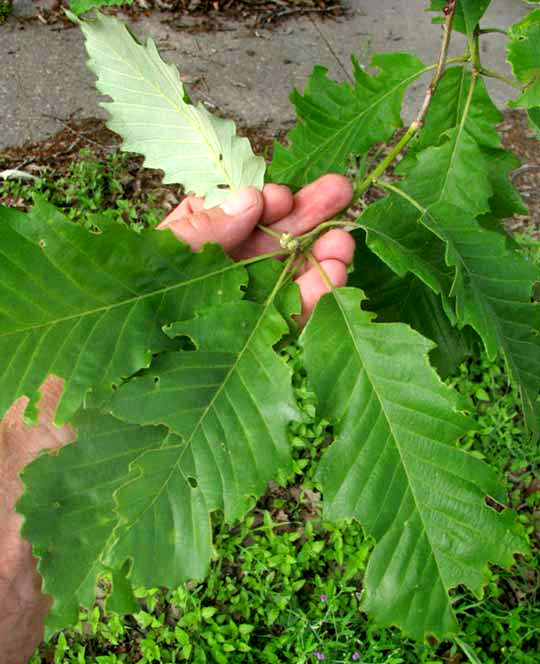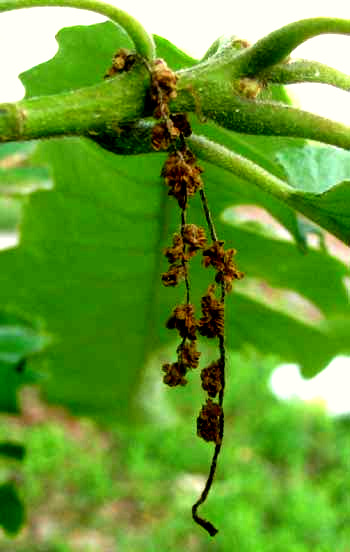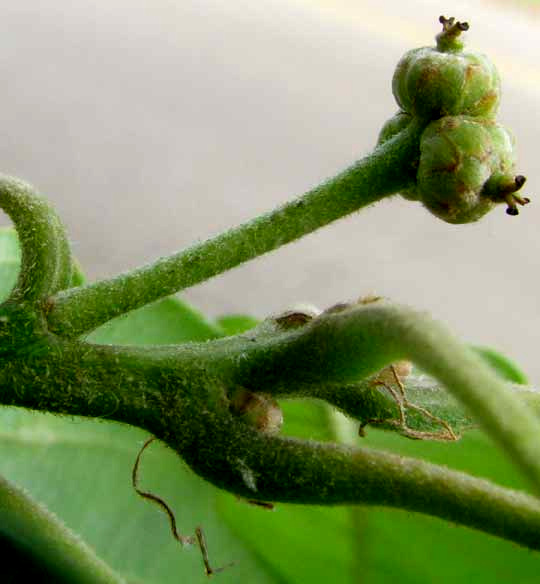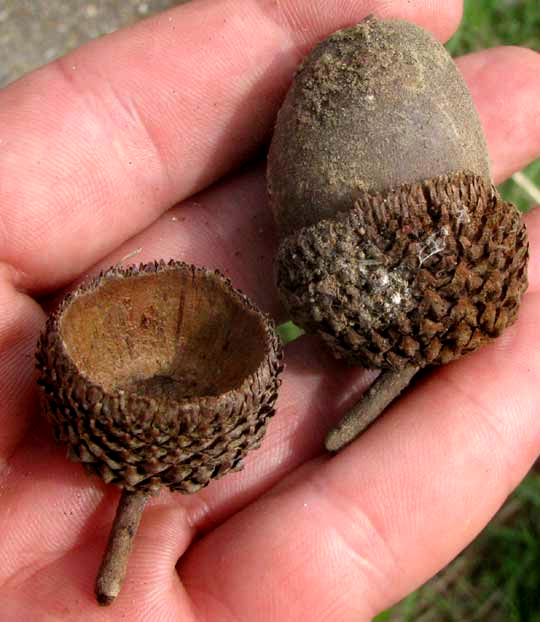Excerpts from Jim Conrad's
Naturalist Newsletter
from the April 1, 2011 on-the-road Newsletter with notes and pictures from Baton Rouge, Louisiana, USA
STREET-CORNER SWAMP CHESTNUT OAK
Beside a weedy abandoned lot at a street corner near the bus station there stood a handsome oak tree whose green-topped, silvery bottomed leaves are shown below:

With those wavy leaf margins it was obviously one of the chestnut oaks, but which one? Starting to "do the botany," I saw that the pagoda-like catkins with their strung-together male flowers already had matured and been dropped as the leaves expanded. You can see a discarded, dried-up catkin dangling from a stem tip below:

The already pollinated female flowers, despite still bearing their three-branched stigmas, were starting to look like tiny acorns on a long peduncle, as shown below:

Below the tree laid last year's acorns, shown below:

This was QUERCUS MICHAUXII, known variously as the Swamp Chestnut Oak, Basket Oak or Cow Oak. It's mostly a southeastern US species. Because of its pretty form, vigorous appearance and big acorns, this was one of my favorite trees in the swamps back in Kentucky, a tree so handsome and substantial that it just felt good looking at it, leaning against it, and especially sleeping beneath it through hoot-owl nights or during too-hot summer afternoons when wind rustled through its leaves.
Its big acorns are bitter with tannin, but that can be leached out with running water, which may take several weeks. Also, acorns can be buried in boggy ground over the winter, then when they germinate in the spring they have lost most of their astringency. Swamp Chestnut Oak acorns also can be roasted, dried, ground into powder and used as a thickening in stews, or mixed with grain meal for making bread. The ground, roasted acorns also make a robust kind of coffee.
Swamp Chestnut Oaks are likely to bear galls, which when soaked in water produce a strongly astringent medicine traditionally used for treating hemorrhages, chronic diarrhea, and dysentery.
What a wonderful tree, and what a delight to find it growing so healthily so near the bus station.